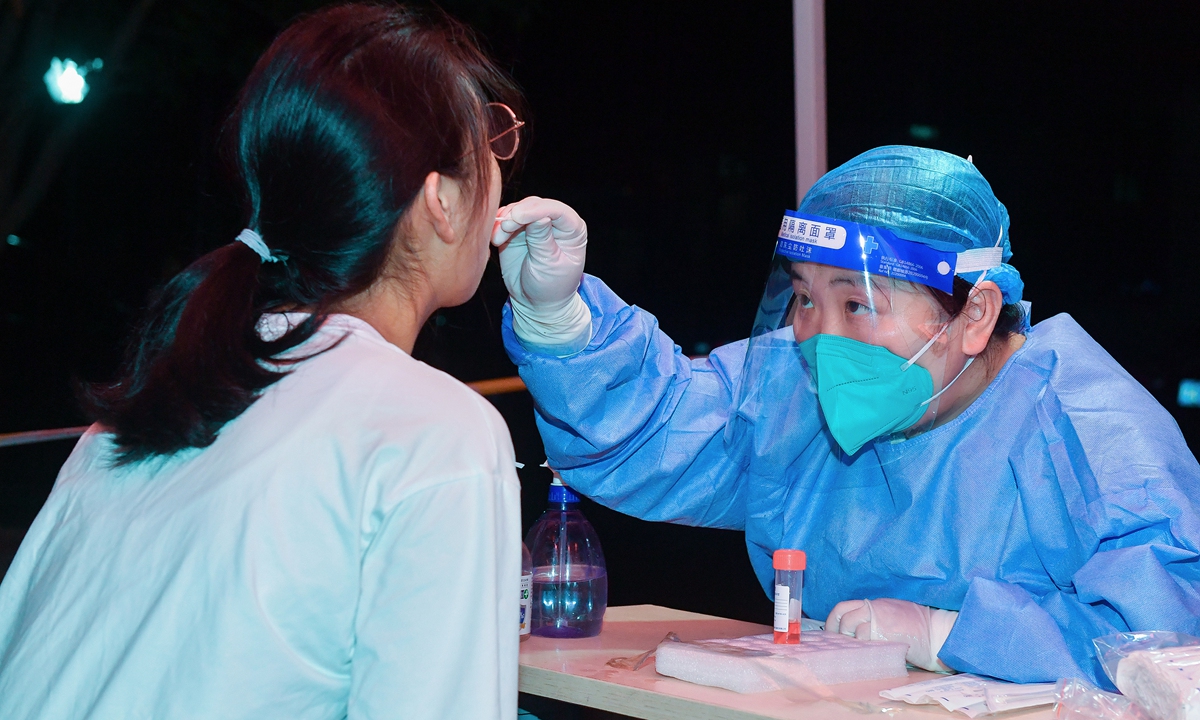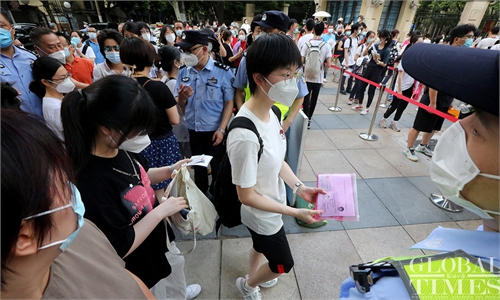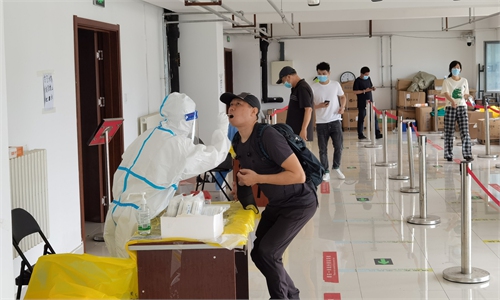Anhui county in E.China in closed management as 151 positive results discovered in one day; domestic vaccines, drugs send good news

A resident from Hefei, capital of East China’s Anhui Province, takes nucleic acid testing on June 27, 2022. Photo: IC
COVID-19 infections continue to increase in some Chinese cities as the country is faced with sporadic outbreaks caused by highly transmissible Omicron variants. Since Friday, the Huaiyuan county in East China's Anhui Province have been put under closed management after 151 positive results were reported during a primary nucleic acid testing the day before.
All the positive cases have been transferred to designated sites for treatment and medical observation. The county is conducting mass nucleic acid testing, according to media reports.
In total, the Chinese mainland reported 64 domestic confirmed cases and 368 domestic asymptomatic cases on Thursday. Most of them are in Northwest China's Gansu Province (30 confirmed cases and 41 asymptomatic cases) and South China's Guangxi Zhuang Autonomous Region (165 asymptomatic cases), according to information released by the National Health Commission.
Authorities in the Haicheng district, Beihai in Guangxi, declared 80 high-risk areas on Friday, according to the media reports.
Officials in Lanzhou, capital of Gansu, said on Thursday highly contagious Omicron subvariant BA.2.38 had been detected in local communities.
BA.2.38 has been a prevailing Omicron subvariant in some Indian cities like Mumbai and Pune since June.
A key mutation in BA.2.38 is the K417T mutation that had been discovered in the Gamma variant previously, which to some extent explained the strong ability to escape immunity response of Gamma, Zhuang Shilihe, a Guangzhou-based expert who closely followed the COVID-19 pandemic, told the Global Times on Friday.
Research in India had showed that BA.2.38 did not lead to an increase in hospitalization and disease severity, according to Zhuang.
Previously, another offspring of Omicron sub-variants BA.5.2 had also being detected in recent outbreaks in Beijing, Shanghai and Tianjin.
Although no valid research had proven that these offsprings would necessarily lead to higher hospitalization and severer disease, they still would bring about huge pressure to Chinese cities in preventing and controlling the epidemic under China's dynamic zero-COVID-19 strategy, experts said.
The shorter incubation period, about two to three days, of these offsprings would lead to more cases appear in the same period compared with other SARS-CoV-2 variant, Yang Zhanqiu, deputy director of the pathogen biology department at Wuhan University, told the Global Times on Friday.
The mutation of the SARS-CoV-2 would continue and it is difficult to predict how it would evolve, Yang said, but still trying to ease public concerns by saying that, despite the mutation, existing vaccines are still effective in preventing severe diseases and deaths against the virus.
Chinese vaccine and drug manufacturers are accelerating research and development of updated products to deal with rapidly mutating virus.
On Thursday, clinical trials on an Omicron-specific candidate developed by an institute in Wuhan, capital of Central China's Hubei Province, under China National Biotec Group, a Sinopharm's subsidiary, kicked off in Xiangyang, Hubei.
On Friday, Chinese drug developer Henan Genuine Biotech told media that they had submitted market application for their COVID-19 drug to related authorities and the application had been accepted.


